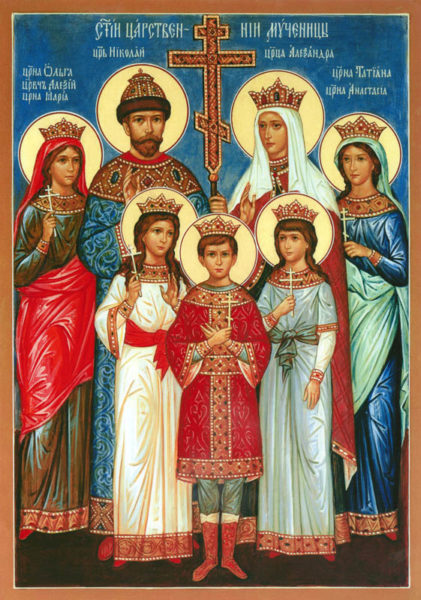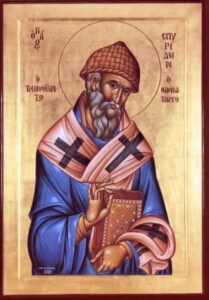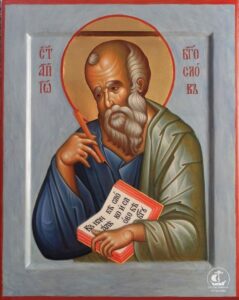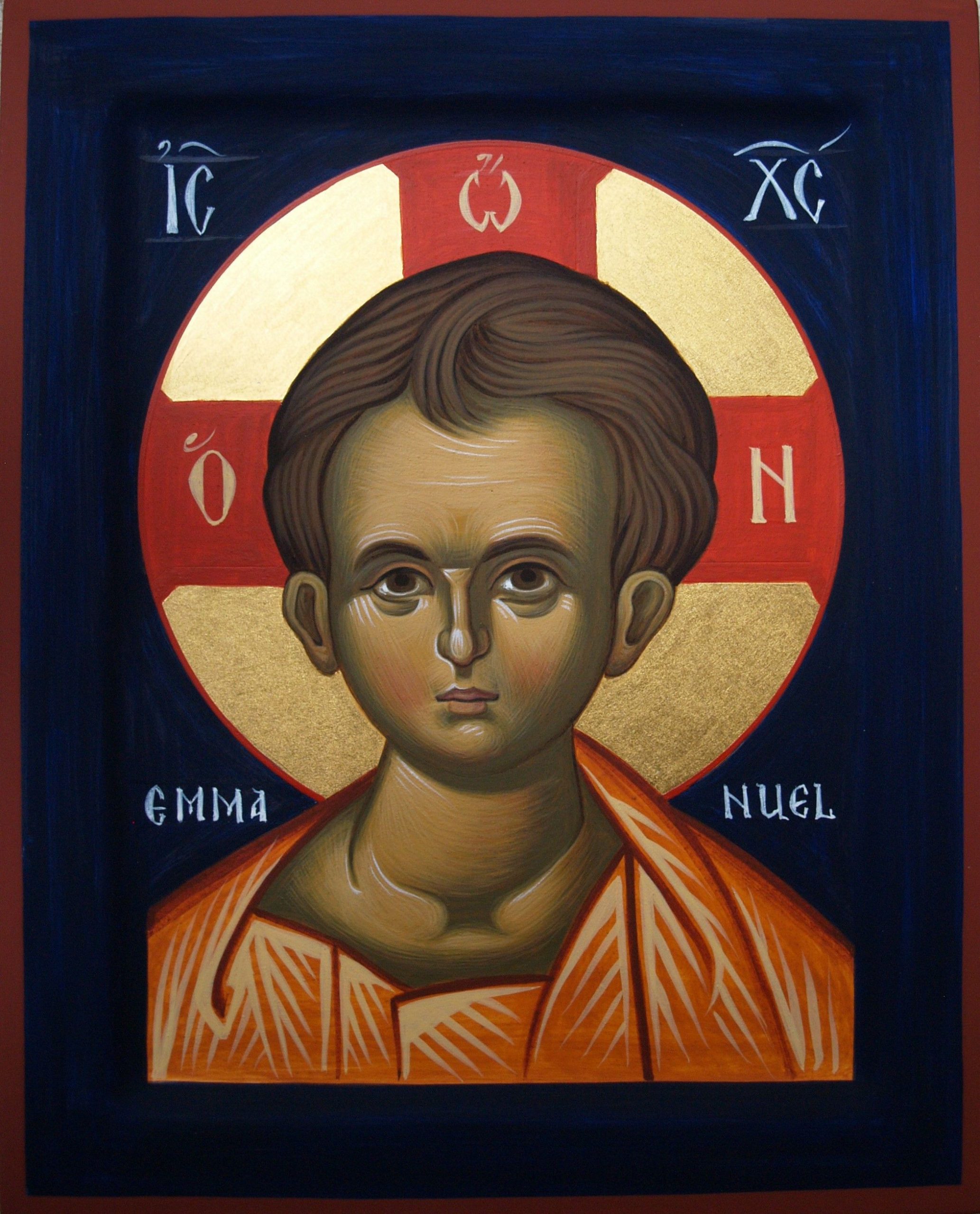Why St. Nicholas the Tsar Could Be Called the Restorer of Orthodox Autocracy. Feast of the Royal Martyrs of Russia.

TSAR NICHOLAS II: RESTORER OF THE ORTHODOX AUTOCRACY
By Dr. Vladimir Moss
The title “Restorer of the Orthodox Autocracy” has been ascribed to Tsar Paul I, and not without reason. After the extreme westernization of the eighteenth-century Tsars, he began to restore Russia, and the Russian autocracy, to her Byzantine and Orthodox roots. He acted to humble the nobility and army officers, and brought the throne closer to the peasantry, improving their lot in many ways. He gave the Holy Synod the right to vote on who should be the over-procurator… However, some of these gains were lost in the next reign. Moreover, the importing of the western doctrines of liberalism and socialism after 1812 served to undermine the autocracy even more profoundly than the absolutist theories of the eighteenth century. It was left to the last and greatest of the Tsars (the phrase belongs to Blessed Pasha of Sarov) to fight the democratic contagion and, still more significantly, to present an image of what an Orthodox autocrat should be that would survive the inter-regnum of the Soviet period and give hope of a restoration of the Orthodox autocracy on a truly solid foundation. Tsar Nicholas looked for his model of the truly Orthodox autocrat to the Muscovite Tsars of the seventeenth century, and especially to Tsar Alexis Mikhailovich. This choice tells us much about Nicholas himself. First, Alexis was an exceptionally pious tsar who spent a great deal of time in prayer and fasting. Secondly, Alexis chose Metropolitan Nicon of Novgorod as Patriarch, and by his initial voluntary submission to him in all spiritual matters showed what the symphony of Church and State could really be. From his admiration for Tsar Alexis, therefore, we may presume that Tsar Nicholas believed that a tsar should be first of all a pious man himself, and then be prepared to enter into a close relationship with the Church on a truly filial basis. The irony, however, is that the relationship between Tsar Alexis and Patriarch Nicon later broke down in a way that led, in the reign of Tsar Peter the Great, to the uncanonical, caesaropapist submission of the Church to the State – a submission that almost all the Church intelligentsia of the late nineteenth and early twentieth centuries, – with the notable exception of C.P. Pobedonostsev, – roundly condemned. So in looking back to the reign of Tsar Alexis, Nicholas was also looking forward to the task that lay ahead of him: the restoration of the relationship between the Church and State in Russia to that almost ideal condition that it had enjoyed in the time of Alexis Mikhailovich before the rift with Nicon. Indeed, we may see this as the main task of Nicholas’ reign, the task upon whose successful completion depended the very survival of both Church and State. The tragedy of Tsar Nicholas’ reign was that whereas the achievement of his goal of restored Church-State “symphony” required both partners to believe in the goal and work zealously for its attainment, in the last analysis only one of the partners actually believed and worked in this way, leading to the abdication of Tsar Nicholas and the fall of the Russian autocracy. * Not that the Church formally rejected the symphonic ideal: on the contrary, in the period 1904-1906 it worked diligently with the Tsar to prepare for the convening of a Sobor – the first since the seventeenth century – that would elect a Patriarch and a patriarchal administration to realize the Church’s administrative independence, without which any talk of a “symphony” with the Tsar on even approximately equal terms was simply wishful thinking. Moreover, the fact that the Sobor was never convened in Tsar Nicholas’ reign was not the Church’s fault, but rather the result of the continuing atmosphere of revolutionary violence… However, “ecclesiastical administrative independence” and “Church-State symphony” are not the same thing; and most Church leaders and activists were much more interested in the former than in the latter. Many wanted Church-State separation on the western model; while others were frankly opposed to any kind of cooperation with the Tsar because they were against the Tsar and Tsarism in general… Of course, the Church remained officially monarchist until the fall of the Empire in 1917. But already in the revolution of 1905, as a result of which the Tsar was forced to transfer some power to the Duma in the October Manifesto, the Church was divided. Thus some of the lower clergy spoke out against the Tsar. And when the revolutionary Peter Schmidt was shot in 1906, Archbishop Sergius (Stragorodsky) of Finland served a pannikhida at his grave. Sergius also gave refuge in his hierarchical house to the revolutionaries Michael Novorussky and Nicholas Morozov. Having such sympathies, it is not surprising that he was not liked by the Royal Family: in 1915 the Empress wrote to the Emperor that Sergius “must leave the Synod”. After the revolution he joined the renovationist heretics, and then, in 1943, became the first “patriarch” of the Sovietized Moscow Patriarchate. However, the great majority of the clergy showed themselves to be monarchists and patriots in the wake of the 1905 revolution. Many clergy joined the monarchist “Union of the Russian People”, the so-called “black-hundredists”. True, Metropolitan Anthony (Vadkovsky) of St. Petersburg, who was suspected by many of being a closet liberal, opposed the Union. But Metropolitan Vladimir of Moscow, Archbishop Tikhon (Bellavin) of Yaroslavl, Archbishop Anthony (Khrapovitsky) of Volhynia, Bishop Hermogen of Saratov, St. John of Kronstadt, Elder Theodosius of Minvody, Fr. John Vostorgov and many others joined it without doubting. However, the Union was plagued by poor leadership that gave it a bad name. It was led by A. Dubronin, who was only superficially Orthodox. Thus he was for the tsar – but against hierarchy! And he wanted to rid the empire of “the Germans”, that is, that highly efficient top layer of the administration which proved itself as loyal to the empire as any other section of the population. When interviewed years later by the Cheka, Dubronin declared: “By conviction I am a communist monarchist, that is, [I want] there to be monarchist government under which those forms of government [will flourish] which could bring the people an increase in prosperity. For me all kinds of cooperatives, associations, etc. are sacred.” Fr. John Vostorgov, one of the founders of the Union, considered Dubronin an enemy of the truth… And in general he stressed that true patriotism can only be founded on true faith and morality. “Where the faith has fallen,” he said, “and where morality has fallen, there can be no place for patriotism, there is nothing for it to hold on to, for everything that is the most precious in the homeland then ceases to be precious.” The major problem for the monarchists was the paradoxicality of the idea of a monarchical party within a monarchy. Tsarism has the major advantage over other political systems of standing above the various interests and classes, being in thrall to the interests of no single party and reconciling them all in obedience to the tsar. But the October manifesto had appeared to many to divide ultimate power between the Tsar and the Duma. And this made party politics inevitable. So the monarchists were forced to conduct party politics in favour of the idea that the state should not be the product of party politics, but incarnate in the tsar who was above all party politics… There could be no real unity between those who ascribed ultimate power in the State to the Tsar and those who ascribed it to the Duma. Moreover, the struggle between the “reds” and the “blacks” was not simply a struggle between different interpretations of the October manifesto, or between monarchists and constitutionalists, but between two fundamentally incompatible world-views – the Orthodox Christian and the Masonic-Liberal-Ecumenist. It was a struggle between two fundamentally opposed views of where true authority comes from – God or the people; it was a struggle for the very heart of Russia. As Bishop Andronicus, the future hieromartyr, wrote: “It is not a question of the struggle between two administrative regimes, but of a struggle between faith and unbelief, between Christianity and antichristianity. The ancient antichristian plot, which was begun by those who shouted furiously to Pilate about Jesus Christ: ‘Crucify Him, crucify Him: His blood be on us and on our children’ – continued in various branches and secret societies. In the 16th century it poured into the special secret antichristian order of the Templars, and in the 18th century it became more definite in the Illuminati, the Rosecrucians and, finally, in Freemasonry it merged into a universal Jewish organization. And now, having gathered strength to the point where France is completely in the hands of the Masons, it – Masonry – already openly persecutes Christianity out of existence there. In the end Masonry will be poured out into one man of iniquity, the son of destruction – the Antichrist (II Thessalonians 2). In this resides the solution of the riddle of our most recent freedoms: their aim is the destruction of Christianity in Rus’. That is why what used to be the French word ‘liberal’, which meant among the Masons a ‘generous’ contributor to the Masonic aims, and then received the meaning of ‘freedom-loving’ with regard to questions of faith, has now already passed openly over to antichristianity. In this resides the solution of the riddle of that stubborn battle for control of the school, which is being waged in the zemstvo and the State Duma: if the liberal tendency gains control of the school, the success of antichristianity is guaranteed. In this resides the solution of the riddle of the sympathy of liberals for all kinds of sects in Christianity and non-Christian religions. And the sectarians have not been slumbering – they have now set about attacking the little children… And when your children grow up and enter university – there Milyukov and co. will juggle with the facts and deceive them, teaching them that science has proved man’s origin from the apes. And they will really make our children into beasts, with just this difference, that the ape is a humble and obedient animal whereas these men-beasts will be proud, bold, cruel and unclean….” Tragically, the new generation that grew up between the first revolution of 1905 and the February revolution of 1917 was largely liberal in faith, and so “the success of antichristianity was guaranteed”… * In spite of the gathering momentum of revolutionary sentiment in the Church and the nation as a whole, the Tsar continued to manifest the image of the true Christian ruler, giving the lie to the liberals’ and revolutionaries’ portrayal of him as “Blood Nicholas”. He was especially distinguished for his mercifulness. He pardoned criminals, even revolutionaries, and gave away vast quantities of his own land and money to alleviate the plight of the peasants. It is believed that he gave away the last of his personal wealth during the Great War, to support the war effort. Even as a child he often wore patched clothing while spending his personal allowance to help poor students to pay for their tuition. The reign of the meek and gentle Tsar Nicholas II gave an unparalleled opportunity to tens of millions of people both within and outside the Russian empire to come to a knowledge of the truth and be saved. Moreover, the strength of the Russian Empire protected and sustained Orthodoxy in other parts of the world, such as the Balkans and the Middle East. The Tsar considered it his sacred duty to restore to Russia her ancient traditional culture, which had been abandoned by many of the “educated” classes in favour of modern, Western styles. He encouraged the building of churches and the painting of icons in the traditional Byzantine and Old Russian styles. In the words of Archpriest Michael Polsky, “In the person of the Emperor Nicholas II the believers had the best and most worthy representative of the Church, truly ‘The Most Pious’ as he was referred to in church services. He was a true patron of the Church, and a solicitor of all her blessings.” During the reign of Nicholas II, the Church reached her fullest development and external power. “By the outbreak of revolution in 1917… it had between 115 and 125 million adherents (about 70 per cent of the population), around 120,000 priests, deacons and other clergy, 130 bishops, 78,000 churches [up by 10,000], 1,253 monasteries [up by 250], 57 seminaries and four ecclesiastical academies.” Traditional church arts were encouraged, and old churches were renovated. The Emperor himself took part in the laying of the first cornerstones and the consecration of many churches. He visited churches and monasteries in all parts of the country, venerating their saints. Moreover, he took a very active part in the glorification of new ones, sometimes urging on an unwilling Holy Synod. Among those glorified during his reign were: St. Theodosius of Chernigov (in 1896), St. Isidore of Yuriev (1897), St. Seraphim of Sarov (1903), St. Euphrosyne of Polotsk (1909), St. Anna of Kashin (1910), St. Joasaph of Belgorod (1911), St. Hermogenes of Moscow (1913), St. Pitirim of Tambov (1914), St. John (Maximovich) of Tobolsk (1916) and St. Paul of Tobolsk (1917). The Emperor stressed the importance of educating the peasant children within the framework of church and parish and, as a result, the number of parish schools, which were more popular among the peasants than the state, zemstvo schools, grew to 37,000. Moreover, Christian literature flourished; excellent journals were published, such as Soul-Profiting Reading, Soul-Profiting Converser, The Wanderer, The Rudder, The Russian Monk, The Trinity Leaflets and the ever-popular Russian Pilgrim. The Russian people were surrounded by spiritual nourishment as never before. Nor did the Emperor neglect the material condition of his people. Under his leadership Russia made vast strides in economic development. He changed the passport system introduced by Peter I and thus facilitated the free movement of the people, including travel abroad. The poll tax was abolished and a voluntary programme of hospitalisation insurance was introduced, under which, for a payment of one rouble per year, a person was entitled to free hospitalisation. The parity of the rouble was increased greatly on the international markets during his reign. In 1897, a law was enacted to limit work hours; night work was forbidden for women and minors under seventeen years of age, and this at a time when the majority of the countries in the West had almost no labour legislation at all. As William Taft commented in 1913, “the Russian Emperor has enacted labour legislation which not a single democratic state could boast of”. The young Tsar Nicholas was a peacemaker by nature, and early in his reign he suggested that all nations come together in order to cut their military forces and submit to general arbitration on international disputes. “The preservation of universal peace,” he wrote, “and the reduction in weapons that weigh on all the peoples is, in the present situation, a goal to which the efforts of all governments should strive.” Military expenses were an ever-increasing burden on the peoples, disrupting their prosperity. “Hundreds of millions are spent on the acquisition of terrible means of destruction which, while considered the last word in science today, must lose all value tomorrow in view of new inventions… Thus as the weapons of each state grow, they answer less and less to the goals put forward by governments.” As a result of the Tsar’s proposal, the Hague Peace Conference was convened on May 18, 1899, and was attended by representatives of 26 nations. Several useful resolutions were passed. In 1921, the American President, Warren Harding, officially acknowledged the Tsar’s noble efforts towards the limitation of armaments by way of binding agreements among the Powers. The First World War broke out in 1914 despite the best efforts of the Tsar to avert it. In the end, he could not turn away from what he felt was his moral duty, as Emperor of the Third Rome, the Orthodox Christian commonwealth, to march to the aid of an Orthodox country, Serbia, that was being unjustly attacked by an heretical nation. In August, 1915 he assumed the post of commander-in-chief of the Russian armies, and immediately secured some important victories. On the eve of the February revolution, as has been recognized by many Russian and foreign historians, the Russian armies were better equipped than ever before and in a good position to turn the tide of war against the Germans in a spring offensive. Such a glorious triumph, which would have secured the Tsar’s reputation as one of the great warrior kings of history, was snatched from him by the treason of the leading elites, especially of the generals, and by the indifference of the Church and nation as a whole, as a result of which he was forced to abdicate… * If we compare the abdication of Tsar Nicholas II in 1917 with that of the British King Edward VIII in 1936 (who happened to be his godson), then we immediately see the superiority, not only of Tsar Nicholas over King Edward, but also of the system of the Orthodox autocracy over that of the constitutional monarchy. Constitutionalists – of whom there were very many among the plotters of 1917 – criticized the Orthodox autocracy mainly on the grounds that it presented a system of absolute, uncontrolled power, and therefore of tyranny. They quoted the saying of the historian Lord Acton: “Power corrupts, and absolute power corrupts absolutely”. But this was a serious misunderstanding. The Orthodox autocracy is based on the anointing of the Church and on the faith of the people; and if it betrays either – by disobeying the Church, or by trampling on the people’s faith, – it loses its legitimacy, as we see in the Time of Troubles, when the people rejected the false Dmitri. It is therefore limited, not absolute, and must not be confused with the system of absolutist monarchy that we see in, for example, the French King Louis XIV, or the English King Henry VIII, who felt limited by nothing and nobody on earth. Tsar Nicholas perfectly understood the nature of his autocratic power, which is why he never went against the Church or violated Orthodoxy, but rather upheld and championed both the one and the other. Moreover, he demonstrated in his personal life a model of Christian humility and love. If he had been personally ambitious, he would have fought to retain his throne in 1917, but he abdicated, as we have seen, in order to avoid the bloodshed of his subjects. What a contrast with Edward VIII, who lived a life of debauchery, and then abdicated because he could not have both the throne and a continued life of debauchery at the same time. He showed no respect for Church or faith, and perished saying: “What a wasted life!” Whereas the abdication of Edward VIII only demonstrated his unfitness to rule, the abdication of Tsar Nicholas, by contrast, saved the monarchy for the future. For in abdicating he resisted the temptation to apply force and start a civil war in a cause that was just from a purely juridical point of view, but which could not be justified from a deeper, eschatological point of view. In this he followed the example of first canonized saints of Russia, the Princes Boris and Gleb, and the advice of the Prophet Shemaiah to King Rehoboam and the house of Judah as they prepared to face the house of Israel: “Thus saith the Lord, Ye shall not go up, nor fight against your brethren, the children of Israel. Return every man to his house…” (I Kings 12.24). The Tsar-Martyr resisted the temptation to act like a Western absolutist ruler, thereby refuting those in both East and West who looked on his rule as just that – a form of absolutism. He showed that the Orthodox Autocracy was not a form of absolutism, but something completely sui generis – the external aspect of the self-government of the Orthodox Church and people on earth. He refused to treat his power as if it were independent of the Church and people, but showed that it was a form of service to the Church and the people from within the Church and the people, in accordance with the word: “I have raised up one chosen out of My people… with My holy oil have I anointed him” (Psalm 88.18, 19). So not “government by the people and for the people” in a democratic sense, but “government by one chosen out of the people of God for the people of God and responsible to God alone”… Immediately after the abdication, on March 11 and 12, 1917, the Council of the Petrograd Religio-Philosophical Society attempted to deny the very concept of the Orthodox autocracy by resolving that the Synod’s acceptance of the Tsar’s abdication “does not correspond to the enormous religious importance of the act, by which the Church recognized the Tsar in the rite of the coronation of the anointed of God. It is necessary, for the liberation of the people’s conscience and to avoid the possibility of a restoration, that a corresponding act be issued in the name of the Church hierarchy abolishing the power of the Sacrament of Royal Anointing, by analogy with the church acts abolishing the power of the Sacraments of Marriage and the Priesthood.” Fortunately, the Church hierarchy rejected this demand. For not only can the Royal Anointing not be abolished, since it is of God: even the last Tsar still remained the anointed Tsar after his abdication. As Shakespeare put it in Richard II (III, ii, 54-7): Not all the water in the rough rude sea Can wash the balm off from an anointed king; The breath of worldly men cannot depose The deputy elected by the Lord. As such, Nicholas remained an anointed tsar to the end of his life. For since the power of the anointed autocrat comes from God, not the people, it cannot be removed by the people. The converse of this fact is that if the people attempt to remove the autocrat from power for any other reason than his renunciation of Orthodoxy, then they deprive themselves of His Grace. That is why St. John of Kronstadt had said that if Russia were to be deprived of her tsar, she would become a “stinking corpse”. And so it turned out: as a strictly logical and moral consequence, “from the day of his abdication,” as St. John Maximovich wrote, “everything began to collapse. It could not have been otherwise. The one who united everything, who stood guard for the truth, was overthrown…” For, as St. John said in another place: “The Tsar was the embodiment of the Russian people’s… readiness to submit the life of the state to the righteousness of God: therefore do the people submit themselves to the Tsar, because he submits to God. Vladyka Anthony [Khrapovitsky] loved to recall the Tsar’s prostration before God and the Church which he makes during the coronation, while the entire Church, all its members, stand. And then, in response to his submission to Christ, all in the Church make a full prostration to him.” In agreement with this, the philosopher Ivan Alexandrovich Ilyin wrote: “Faithfulness to the monarchy is a condition of soul and form of action in which a man unites his will with the will of his Sovereign, his dignity with his dignity, his destiny with his destiny… The fall of the monarchy was the fall of Russia herself. A thousand-year state form fell, but no ‘Russian republic’ was put in its place, as the revolutionary semi-intelligentsia of the leftist parties dreamed, but the pan-Russian disgrace foretold by Dostoyevsky was unfurled, and a failure of spirit. And on this failure of spirit, on this dishonour and disintegration there grew the state Anchar of Bolshevism, prophetically foreseen by Pushkin – a sick and unnatural tree of evil that spread its poison on the wind to the destruction of the whole world. In 1917 the Russian people fell into the condition of the mob, while the history of mankind shows that the mob is always muzzled by despots and tyrants… The Russian people unwound, dissolved and ceased to serve the great national work – and woke up under the dominion of internationalists. History has as it were proclaimed a certain law: Either one-man rule or chaos is possible in Russia; Russia is not capable of a republican order. Or more exactly: the existence of Russia demands one-man rule – either a religiously and nationally strengthened one-man rule of honour, fidelity and service, that is, a monarchy, or one-man rule that is atheist, conscienceless and dishonourable, and moreover anti-national and international, that is, a tyranny…” The Russian constitutionalists demanded of Tsar Nicholas that he give them a “responsible” government, by which they meant a government under their control. But the rule of Tsar Nicholas was already responsible in the highest degree – to God. For this is the fundamental difference between the Orthodox autocrat and the constitutional monarch, that whereas the first is responsible to God alone, the latter, while claiming to rule “by the Grace of God”, in fact is in thrall to the people and fulfils their will rather than God’s. So we have three kinds of king: the Orthodox autocrat, who strives to fulfil the will of God alone, and is responsible to Him alone; the absolute monarch, who fulfils only his own will, and is responsible to nobody; and the constitutional monarch, who fulfils the will of the people, and can be ignored or deposed by them as they see fit. The significance of the reign of Tsar Nicholas II lies in the fact that he demonstrated, in his life and death, what a true Orthodox autocrat – as opposed to an absolutist despot or a constitutional monarch – really is. This knowledge had begun to fade in the minds of the people, and with its fading the autocracy itself became weaker and eventually collapsed. But Tsar Nicholas restored the image of the autocracy to its full glory, and thereby preserved the possibility of its complete restoration in a future generation… March 2/15, 2011.





